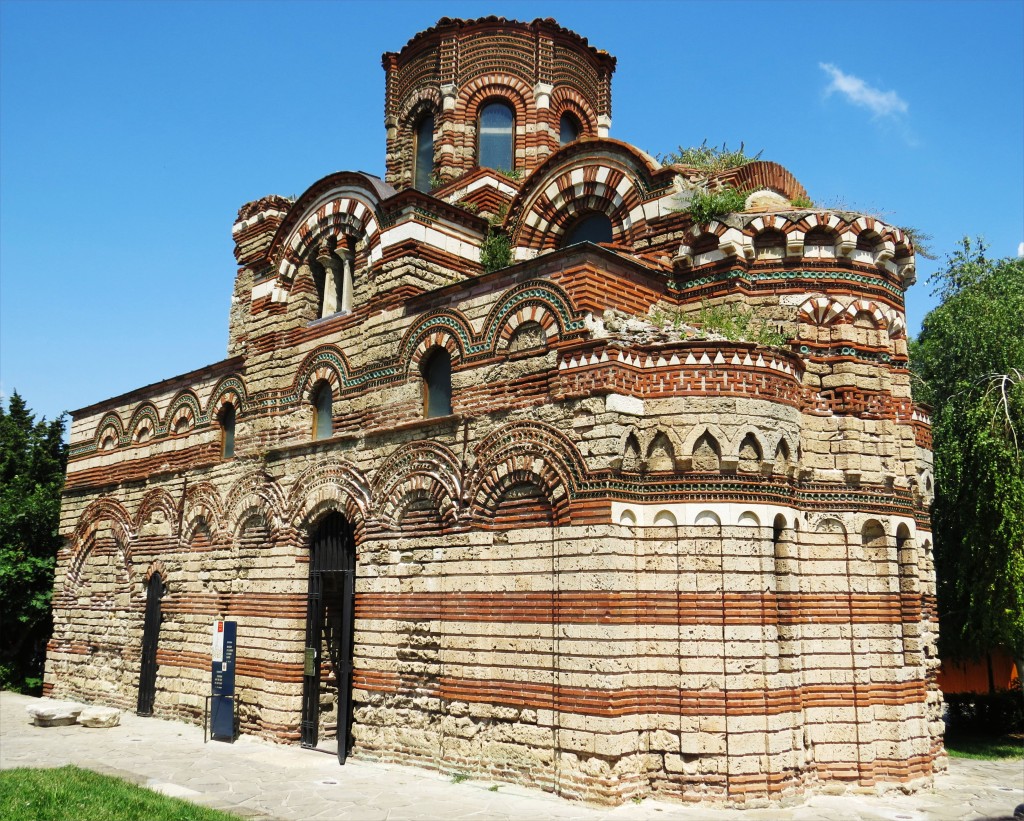On July 25th, I was able to step back in time on a delightful stroll through the heart of Old Nessebar, one of Bulgaria’s most enduring towns and an UNESCO World Heritage Site. It is a place where many civilizations left their tangible traces; archaeological structures from the second millennium BC, a Greek Black Sea colony with surviving remains of fortifications, a Hellenistic villa and the development of medieval religious architecture with rich plastic and polychrome decorations on its facades in the form of ceramic ornamentation typical for the period. It also has the charm of a fisherman’s settlement with lovely restaurants overlooking the sea and the smell of the salty sea water in the air.
After meeting our tour guide, we enjoyed walking through the maze of Nessebar’s narrow cobbled streets which are home to many historical wooden houses from the Bulgarian Revival period. Around almost every corner, you will find unique churches which create the uniqueness of old Nessebar. At the end of the Mena Street, we reached the St. Stefan Church. Built in the 11th century, the building exterior consists of stones and bricks. It is one of the rare monuments with well-preserved frescos from the 16th-18th century. On the flooring inside the church, old Hellenic grave stones were laid. A medieval marble cornice with relief ornamentation was used as a step, leading to the Holy doors of the altar.
By its original architecture, wood carvings, painted iconostasis and artistic wall paintings, the church St. Stefan is arranged between the most remarkable monuments of Bulgarian cultural heritage. Today, the St. Stefan Church is a museum and welcomes tourists during the summer months. We continue our walking tour to Mesambria Square to visit the 14th century Church of Christ Pantocrator. It is 15.57 meters long and 6.86 meters wide. The external ornamentation of the church is rich with embellishment details. The most lavishly decorated part of the church is the east side of the apse. Interchanging three or four rows of bricks and carved stone which create an optical pattern are the most basic type of decorations used. Rows of blind arches, four-leaved floral motifs, and circular turquoise ceramics and brick swastika friezes run along the east wall. The narthex, which is located above a vaulted crypt, is separated from the rest of the church by a massive wall with an opening for a staircase to the belfry. Today, the church houses an art gallery which exhibits works by Bulgarian artists.
As we continue on our walking tour, our attention is drawn to a very small church, non-typical of Nessebar. One gets the impression that it is trying to deliberately conceal itself by a low profile, erected from mud and stone. This is the Saint Spa Church, built in the 17th century. On entering the church, one is amazed by the magnificent mural fresco’s that represent episodes of Christ and the Holy Virgin. Today the church is a museum.
We continue our promenade along Mitropolitska Street which took us to the next church. One that differs in style and dates from another period – Saint John the Baptist. Built in the 10th century, it is an example of the transition from the short basilica to the cruciform dome churches. This building was built from stone with the use of red mortar. There is an early form of scanty decoration made of bricks at the exterior windows and above the entrance door. The church is almost 14 meters long and 10 meters wide. The apses are semi-cylindrical and there is a peculiar high step along the lower part of the central one obviously serving as a seat. Today a gallery offering works of art is accommodated in the church.





